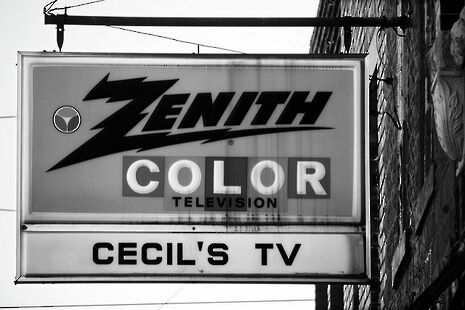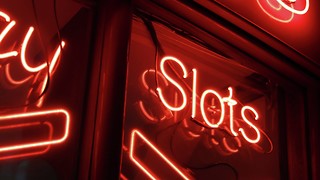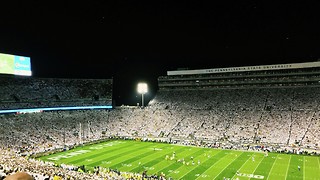There’s nothing on telly
Gabrielle McGuinness ponders on the lack of diversity on TV

We are far away from an age in which the media fairly represents the diverse identities around us. While Moonlight deserved the Oscar for Best Picture, it was certainly a welcome surprise that the Academy picked it. And yet I don’t think we should be congratulating Hollywood too much. It all feels a bit like lip service to keep them in good opinion, especially given the push of #oscarssowhite at last year’s ceremony.
But it hardly ends at Hollywood. ‘There’s nothing on telly’ never had truer meaning than when applied to the lack of media diversity. Eastenders, for instance, has Asian and black families only as token characters, and has recently come under fire for their damaging portrayal of Islam. Aside from Black Mirror’s ‘San Junipero’ episode that ended in love beyond the strange dystopian grave, lesbian characters tend to get brutally killed off. I am begrudgingly making my way through Gilmore Girls, despite being utterly repulsed not only by Rory Gilmore but also by the model of white feminism splattered across every episode. And don’t make me list the number of TV shows and films with an essentially all white cast, bar the black extra.
America’s Next Top Model had always been my guilty secret. Although I am a sucker for pretty clothes and reality TV competitions, I knew deep down that it was harmfully projecting a homogenous and inaccessible image of female beauty. And so I traded it in for RuPaul’s Drag Race.
"‘There’s nothing on telly’ never had truer meaning than when applied to the lack of media diversity"
For me, it was a way to avoid working for my A Levels, but I soon found it was not quite the mind-numbing trashy release that I wanted. Where America’s Next Top Model parades a damaging idea of womanhood on a catwalk, RuPaul's Drag Race topples these ideas off their high heels. For those times when Judith Butler is a little too dense and verbose to read, the theory of gender performativity is demonstrated in RuPaul’s Drag Race right before your eyes.
When I’m too tired to engage with the deconstruction of identities, I can focus more on the rivalry between pageant, fashion and comedy queens that crops up every season. The bitchy comments that come out of the interviews and the ridiculousness of the weekly challenges are just outrageous fun and it will teach you how to lip-sync and contour along the way, too. Plus if you’re in need of a new slogan there are plenty to adopt, my personal favourites being ‘the library is open’, ‘sashay away’ and ‘you better work!’ RuPaul emerging onto the catwalk in full drag during every episode is a continual highlight, as is the appearance of his song ‘Cover Girl’ blaring through the speakers of the runway scene. The show offers a queer new world to escape into when you want to run from responsibilities, so it is no huge surprise that the show has developed such a strong cult following.
At its best, it is subversive and unashamedly bold in its message, and it encouraged me to think freely about gender and sexuality and thus feel confident in my own skin. But in encouraging viewers to be critical of the world, Drag Race itself becomes susceptible to criticism. It is possible to take issue with the permutations of femininity the queens choose to perform. Towering heels, layers of makeup, skintight dresses, lusciously long locks and barbie doll figures are regularly featured. Season seven winner Violet Chachki is a tightly corseted, leggy and wafer-thin queen who heralds the age of drag as high fashion fused with art. As a self-defining female viewer who found the show empowering because it taught me that femininity was performed, mutable and varied, Violet seems like a step back in the wrong direction. Even though a critique of gender identities and consumerism might be at the core of the show, these ideas often get misconstrued at the expense of creating shocking television.
While it has brought the oft neglected narrative of marginalised drag communities into the mainstream, white homosexual contestants on the show are often guilty of appropriating black femininity, and there have been undercurrents of transphobia over the years. The show has a history of transgender or genderfluid queens – 12 overall coming out either during or after the show – but at the same time it features a frequent use of terms such as ‘tranny’ or ‘ladyboy,’ and on one occasion even a mini-challenge called ‘female or she-male’ in which contestants were asked to distinguish whether a segment of a photo showed a cisgender woman or a former Drag Race contestant. In a show that does so much good work towards deconstructing identities, there is a real tension between transgender and drag queen identities that ought to be resolved. Just because the show prioritises one minority group does not mean it should oppress the other.
Of course I will continue to watch the show, as long as Logo continues to make it. The show places the lives and concerns of a counterculture into the mainstream media’s eye and so it is inevitable that its politics are bound to become the subject of scrutiny. Despite the flaws that arise, I think that shows like Drag Race, which already push the boundaries of mainstream representation, are the vehicles for pushing towards a more intersectional vision of the media generally. But what we can all move forwards from is RuPaul’s greatest pearl of wisdom: “If you can’t love yourself, how the hell are you going to love somebody else?”
 News / Uni welcomes new students14 August 2025
News / Uni welcomes new students14 August 2025 News / Trinity sells O2 Arena lease for £90m12 August 2025
News / Trinity sells O2 Arena lease for £90m12 August 2025 Features / The community Cambridge accommodation creates (and doesn’t)9 August 2025
Features / The community Cambridge accommodation creates (and doesn’t)9 August 2025 News / Locals urge University to fund River Cam repairs16 August 2025
News / Locals urge University to fund River Cam repairs16 August 2025 Features / Incoming freshers and their hopes, fears and expectations for Cambridge 12 August 2025
Features / Incoming freshers and their hopes, fears and expectations for Cambridge 12 August 2025









